Firearms in America
I do my best to provide unbiased information pertaining to different types of firearms, manufacturers, and laws. Certain sections of this site focus on specific areas and topics related to firearms. I only post information on topics and items that I can speak intelligently about. If I am not educated on a specific topic or item then you will not find it here.
Now for the disclaimers; I am not a gunsmith, lawyer, law enforcement officer, or gun control lobbyist. Nor do I play one on television. Any information contained on this site contains no warranty or guarantee of any kind. This site exists for the sole purpose of being useful to those who are less educated about firearms.
Optics: high priced rifle scopes
Have you ever browsed through the different models of rifle scopes and sorted them by price? If you are looking at a high-end scope manufacturer don't be surprised if their best models are $3,000 and up. What makes these things so damn expensive? In this article, I'll cover some of main reasons for such high priced optics.
In general, most of the ultra-expensive optics are for long range shooting. Yes, you will find some mid-range AR scopes for $2000+ but far and wide, you are looking at big bore = big bucks.
Rifles capable of shooting 1000 yards and up are often chambered in calibers like .308 WIN, 300 WIN MAG, 338 Laupua, and 50 BMG. When talking long range these rifles and their components are VERY expensive. The materials and precision needed to manufacture something capable of shooting 1000+ yards are expensive and the optics are certainly no exception. Here are some of the factors which command such high prices: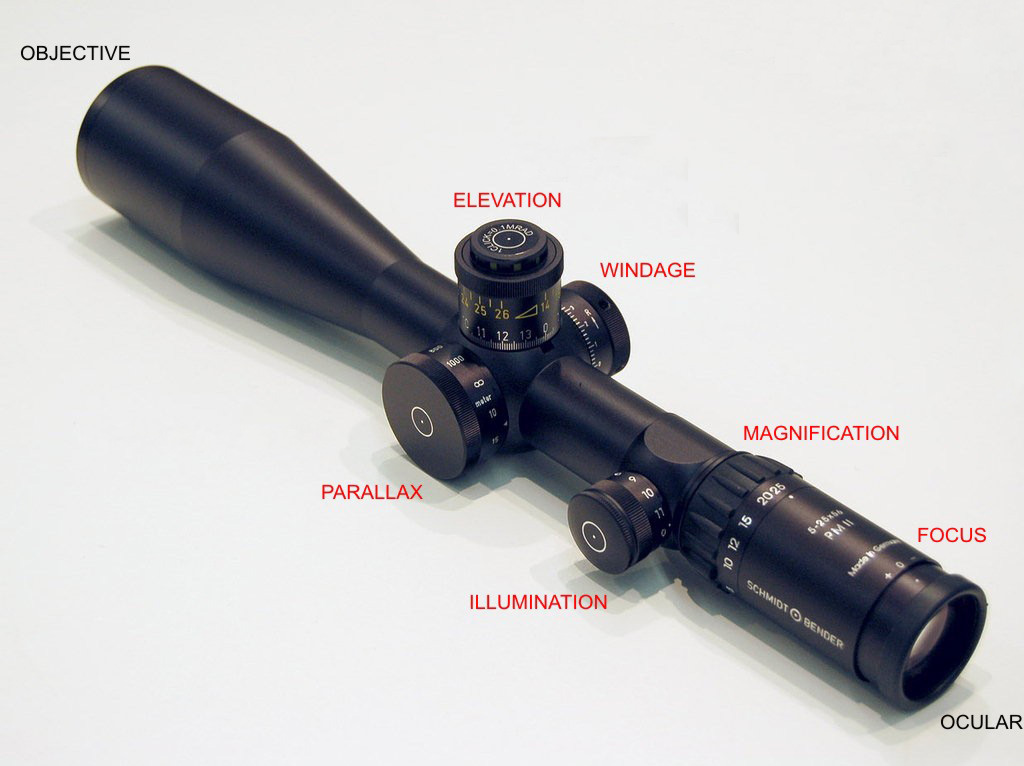
- Glass
- Focal plane
- Recoil absorption
- Truly accurate adjustments
- Specialized reticles
- Eye relief
- Adjustable parallax
- Integrated range finder
- Integration with software
Much like camera lenses, the quality of the glass goes a long way. You will start to notice the quality in terms of clarity. Cheaper scopes will not be as clear at max distances or under low light conditions. Just as an expensive camera lens lets in more light, so do these high-priced rifle scopes.
Focal planes are another reason these scopes cost so much. Without getting into the differences between first and second focal planes it's safe to say the majority of these high priced optics are first focal plane. The offer several advantages for advanced shooters and because of the first focal plane design, they are more expensive to produce.
When talking big bore, specifically .338 and .50 BMG, the amount of recoil these guns produce will break a cheaper rifle scope. All high-end scopes will indicate they are warrantied for use on .338 and/or 50 BMG. Again, this comes down to materials and design. They just cost more to build for such an application.
Low to mid-range rifle scopes often suffer from the same problem; the adjustments just aren't exactly what they say. A 1/2 MOA adjustment per click may actually be 1/3 or 2/3 of an adjustment. When shooting at 1000+ yards, any deviation from it's true claimed adjustment increments makes a huge difference. Like everything else, this precision comes at a price.

You will also find specialized reticles that are not available on cheaper scopes. Horus reticles are becoming more popular among long range shooters as it provides an easier way to calculate hold overs. Horus reticles are built on first focal plane optics.
Eye relief is the distance between your eye and the scope. Optics using better glass will have a larger eye relief. In addition, scopes meant for big bore guns will have a larger eye relief to deal with the aggressive recoil from the larger calibers. This reduces the possibility of the shooter being hit in the face by the scope when it recoils which is often called "scope kiss."
Without getting into what parallax is, some of these high-end rifle scopes provide parallax adjustment. On cheaper optics you will commonly see something like "parallax free from 108 yards." The ability to change the parallax settings is another bump in price.
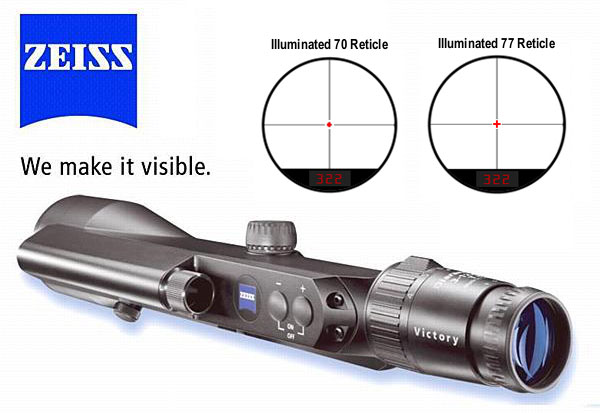
Some scopes like the Zeiss even have integrated range finders which display the target distance inside the reticle. This allows shooters to quickly calculate hold overs or adjustments.
Finally, many high-end scope manufacturers provide the specifications of the products to software makers who create smart-phone or PDA-enabled applications which can assist shooters in determining their adjustments and/or hold overs. This works by specifying a target distance combined with actual gun, scope and environmental elements. Wind, elevation and humidity are all used to determine the bullets calculated point of impact. This becomes even more granular with experienced hand loaders.
I also must mention that if you are a new shooter with deep pockets you probably won't be able to reap the full benefits from one of these scopes. In addition to experience behind the trigger, you will also need a very good understanding of ballistics.
AMMO: what is +P and +P+
+P and +P+ ammo usually refers to self defense ammo that is loaded extra "hot" in order to achieve higher velocity. The downside to these loads is increased recoil and additional muzzle flash. These can be counteracted buy using a lighter bullet and gun powder that has a "flash suppressant."
+P and +P+ loads are produced by nearly all ammo manufacturers leveraging hollow point bullets and the projectile of choice.
All ammunition is assigned a SAAMI rating. The Sporting Arms and Ammunition Manufacturers' Institute has long been regarded as the experts on small arms ammunition specification. All reloading manuals will cite SAAMI specs for each caliber. It is important to know that both +P and +P+ loads will be marked as such on the rear of the case.
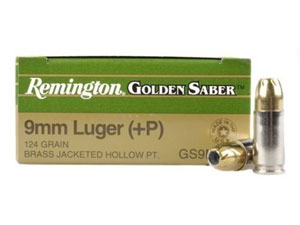
A + P load is X percent higher than the SAAMI suggested load. Where is X is a value between 9% and 96% depending on caliber. It is important to know that while the +P and +P+ load exceeds the SAAMI standard pressure values, it does not exceed the absolute safe value commonly known as a "proof round." A proof round is the ceiling number which should NEVER be exceeded under any circumstances.
A +P+ load is X percent higher than a +P load. SAAMI does not publish +P+ loads and therefore they are developed by each ammunition manufacturer. Again +P+ does not exceed the proof round.
Let's use 9mm as an example. Standard pressure SAAMI loads are 35,000 PSI while +P pressure is 38,500. Load data for +P+ is no specified by SAAMI, but the proof round value is 45,700 PSI. By deductive reasoning we can estimate a +P+ load of 42,000 PSI.
So you may be thinking, okay these loads are made by just increasing the amount of gun powder. Not entirely. Of course more powder is used to achieve higher velocity. However, there are several other factors which go into creating these loads:
- Bullet choice
- Bullet seating depth
- Primers
- Crimp
As mentioned before the weight and design of the bullet also plays a role in velocity and powder charge. Generally speaking, a heavier bullet requires less powder. It also generates more recoil. A lighter bullet generates less recoil, but requires more powder. So it's a balancing act depending on the velocity requirements. Look at the boxes of ammo in this article. You will notice the +P+ load uses a lighter bullet (115 grain) while the +P uses a heavier one (124 grain).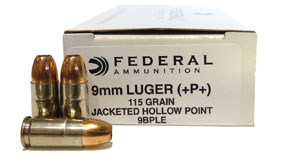
Bullet seating depth is a fairly easy way to increase or decrease the amount of pressure in a cartridge. Even very small differences (thousands of a inch) can yield significant results.
Primers must be chosen carefully as the additional pressure increases the possibility of blowing primers from the rear of the case. Match primers and rifle primers have a stronger cup to ensure they stay seated in the cartridge once fired.
Bullet crimp is performed right after the bullet is seated. It also a way to regulate cartridge pressure although we see more emphasis on crimp in rifle rounds.
It's important to know that not every gun is compatible with +P+ or even just +P. You should always check your owners manual or manufacturer before shooting it. If fired in a gun not compatible you may wear the gun out very quickly thereby damaging internal parts. In extreme cases you can blow the barrel, breech, and frame apart (see this video). Generally, the +P restriction is seen in compact guns or low quality firearms.
If you are using a full size and/or quality pistol you should be fine shooting +P. My HK USP-SD has a "tactical" recoil spring designed to handle additional pressure from shooting suppressed. It has no problems shooting +P or even +P+ ammo. In fact, some guns like the HK Mark 23 were specifically designed for +P ammo.
Choosing a weapon light
Weapon lights come in many different flavors today. Everything from dedicated lights that mount directly to gun, to handheld lights that can used with your off hand. No matter which type of light you are looking for, you will probably notice an extremely wide price range. In this article, I will cover some aspects related weapon lights and cost.
Weapon lights are like most other things in life; you get what you pay for. In 2014, there is no reason why anyone should still be using a light with an incandescent bulb. Buy an LED light! Is that $25 dollar NCstar light comparable to the $225 Surefire light? Of course not. The devil is in the details. While they are both weapon mounted LED-powered lights, the NCstar is not as durable and will probably break if used on a shotgun for an extended period of time. It is not waterproof (at least not for long), and the LED used is cheap. Will the hobbyist who shoots once a month notice the difference? Maybe not. However, that $225 Surefire light is one of the best you can buy. It's also one of the most expensive, but for good reason. Surefire is the top choice for many MIL/LE users due to the construction and reliability.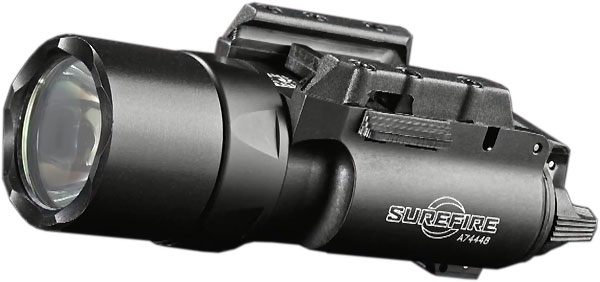
They are designed and tested to operate in any conditions; hot or cold, wet or dry. They are built to withstand recoil from anything between a full-auto M4 and a 12 gauge shotgun. On the off chance that you smash the front of the light and render it inoperable, Surefire will repair or replace your light. Moving away from Surefire, there are many other quality light manufacturers with the same or similar standards/warranty. Streamlight, Insight, and 4Sevens all have great products that will serve for your many years after your purchase.
Personally, I use mostly Streamlight because they run between $100-$200 and have the same lifetime warranty as the Surefire models. The only downside being they aren't waterproof to same depth. Not a deal breaker for me since I don't carry guns when I'm scuba diving.
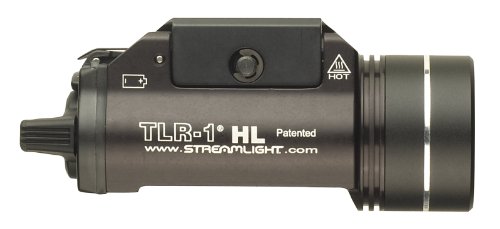
At the end of the day, if you want a quality light with a great warranty you will need to spend some cash. Weapon lights and optics are commonly associated with the term "buy once, cry once." Yes, they are very expensive, but with a lifetime warranty once you own it you probably won't need another one until the technology is rendered obsolete.
 12/01/11 11:19:00 am,
12/01/11 11:19:00 am, 